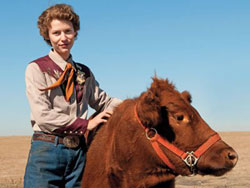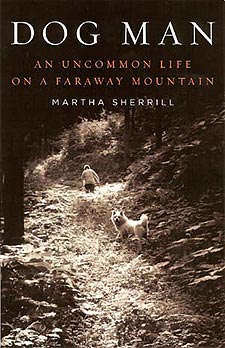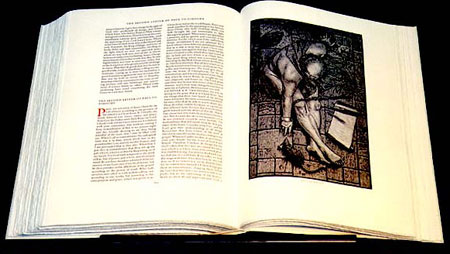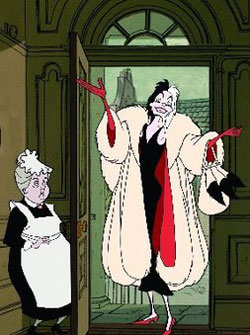 For those of us who care for an earth not encompassed by machines – a world of textures, tastes and sounds other than those that we have engineered – our task is that of taking up the written word, with all its potency, and patiently, carefully writing language back into the land. Our craft is that of releasing the budded, earthly intelligence of our words, freeing them to respond to the speech of the things themselves – to the green uttering-forth of leaves from the spring branches. It is the practice of spinning stories that have the rhythm and lilt of the local soundscape, tales for the tongue, tales that want to be told, again and again, sliding off the digital screen and slipping off the lettered page to inhabit these coastal forests, those desert canyons, those whispering grasslands and valleys and swamps. Finding phrases that place us in contact with the trembling neck-muscles of a deer holding its antlers high as it swims toward the mainland, or onto the ant dragging a scavenged rice-grain through the grasses. Planting words, like seeds, under rocks and fallen logs – letting language take root, once again, in the earthen silence of shadow and bone and leaf.
For those of us who care for an earth not encompassed by machines – a world of textures, tastes and sounds other than those that we have engineered – our task is that of taking up the written word, with all its potency, and patiently, carefully writing language back into the land. Our craft is that of releasing the budded, earthly intelligence of our words, freeing them to respond to the speech of the things themselves – to the green uttering-forth of leaves from the spring branches. It is the practice of spinning stories that have the rhythm and lilt of the local soundscape, tales for the tongue, tales that want to be told, again and again, sliding off the digital screen and slipping off the lettered page to inhabit these coastal forests, those desert canyons, those whispering grasslands and valleys and swamps. Finding phrases that place us in contact with the trembling neck-muscles of a deer holding its antlers high as it swims toward the mainland, or onto the ant dragging a scavenged rice-grain through the grasses. Planting words, like seeds, under rocks and fallen logs – letting language take root, once again, in the earthen silence of shadow and bone and leaf.
The rain surrounded the cabin…with a whole world of meaning, of secrecy, of rumor. Think of it: all that speech pouring down, selling nothing, judging nobody, drenching the thick mulch of dead leaves, soaking the trees, filling the gullies and crannies of the wood with water, washing out the places where men have stripped the hillside…Nobody started it, nobody is going to stop it. It will talk as long as it wants, the rain. As long as it talks, I am going to listen.
~~ Thomas Merton
Our strictly human heavens and hells have only recently been abstracted from the sensuous world that surrounds us, from this more-than-human realm that abounds in its own winged intelligences and cloven-hoofed powers. For almost all oral cultures, the enveloping and sensuous earth remains the dwelling place of both the living and the dead. The “body” – whether human or otherwise – is not yet a mechanical object in such cultures, but is a magical entity, the mind’s own sensuous aspect, and at death the body’s decomposition into soil, worms and dust can only signify the gradual reintegration of one’s ancestors and elders into the living landscape, from which all, too, are born.
This cycling of the human back into the larger world ensures that the other forms of experience that we encounter – whether ants, or willow trees, or clouds – are never absolutely alien to ourselves. It is, paradoxically, this perceived kinship that renders the difference, or otherness, so eerily potent.
Gradually, then, our senses awaken to the world. We become aware of the thoughts that are thinking all around us – in the bushes, under the tumbled stones. As we watch the crows, our own limbs begin to feel the intelligence of feathered muscles adjusting to the wind. Our toes listen to roots sending capillaries in search of water, and our skin replies to the lichens radiating in slow waves across the surface of the upthrust bones of the hill. Walking along the pebbled beach, we notice the ground itself responding to our footfalls – the hermit crabs all diving for cover – and sense the many-voiced forest listening to us as we speak. And so we adjust our own speaking, taking new care with our gestures and actions…
Ah, not to be cut off,
not through the slightest partition
shut out from the law of the stars.
The inner – what is it?
if not intensified sky,
hurled through with birds and deep
with the winds of homecoming
~~ Rainer Maria Rilke
Excerpted from The Spell of the Sensuous, by David Abram.
A brief summary of animism at Anthropik.

 Now is the time for the burning of the leaves,
Now is the time for the burning of the leaves, Asperger’s Syndrome, a disorder in the autism spectrum first identified in 1944 by an Austrian pediatrician, Hans Asperger, has become a popular dramatic plot device in television shows such as House, Bones, Law & Order and Degrassi: The Next Generation. It defined the fascinating profile of the literary protagonists in Mark Haddon’s 2003 award-winning novel, The Curious Incident of the Dog in the Night-time, and in Stieg Larsson’s 2008 posthumous work, The Girl with the Dragon Tattoo.
Asperger’s Syndrome, a disorder in the autism spectrum first identified in 1944 by an Austrian pediatrician, Hans Asperger, has become a popular dramatic plot device in television shows such as House, Bones, Law & Order and Degrassi: The Next Generation. It defined the fascinating profile of the literary protagonists in Mark Haddon’s 2003 award-winning novel, The Curious Incident of the Dog in the Night-time, and in Stieg Larsson’s 2008 posthumous work, The Girl with the Dragon Tattoo.


 This is an ancient story told on the Queen Charlotte Islands about how Raven helped to bring the Sun, Moon, Stars, Fresh Water and Fire to the world.
This is an ancient story told on the Queen Charlotte Islands about how Raven helped to bring the Sun, Moon, Stars, Fresh Water and Fire to the world. The first dog came into their lives in 1944. They were living in Hachimantai, an undeveloped and remote part of Akita, the north-westernmost prefecture of Japan, after which the dog breed was named, and a 22-hour train ride from Tokyo in those days. Kitako Sawatoishi was 23, raising their first two children, a toddler and an infant. Her husband, Morie, was 28 and an engineer for Mitsubishi, assigned to electrify the far north, a region that had struggled with poverty and harsh weather for centuries. Even in the best of times, it was a forbiddingly beautiful but neglected part of Japan. Only two cities in the region had power in those days – Odate and Akita City – and the rest of the large prefecture of Akita was without electricity, piped-in gas, or heat throughout the long winter.
The first dog came into their lives in 1944. They were living in Hachimantai, an undeveloped and remote part of Akita, the north-westernmost prefecture of Japan, after which the dog breed was named, and a 22-hour train ride from Tokyo in those days. Kitako Sawatoishi was 23, raising their first two children, a toddler and an infant. Her husband, Morie, was 28 and an engineer for Mitsubishi, assigned to electrify the far north, a region that had struggled with poverty and harsh weather for centuries. Even in the best of times, it was a forbiddingly beautiful but neglected part of Japan. Only two cities in the region had power in those days – Odate and Akita City – and the rest of the large prefecture of Akita was without electricity, piped-in gas, or heat throughout the long winter. As he walked home in the snow, a thought occurred to Morie. What if he bought the best akita he could find and kept it alive until the war was over? Perhaps there were dogs available to save and a network could be assembled.
As he walked home in the snow, a thought occurred to Morie. What if he bought the best akita he could find and kept it alive until the war was over? Perhaps there were dogs available to save and a network could be assembled. HOME: Where they keep the kibble. The origin and the terminus of the walk. At home, all scents are known.
HOME: Where they keep the kibble. The origin and the terminus of the walk. At home, all scents are known. J. R. Carpenter’s long-awaited first novel Words the Dog Knows follows the crisscrossing paths of a quirky cast of characters through the Mile End neighbourhood of Montreal. Simone couldn’t wait to get out of rural Nova Scotia.In Montreal she buries her head in books about far off places.
J. R. Carpenter’s long-awaited first novel Words the Dog Knows follows the crisscrossing paths of a quirky cast of characters through the Mile End neighbourhood of Montreal. Simone couldn’t wait to get out of rural Nova Scotia.In Montreal she buries her head in books about far off places.
 Pongo and Missis Pongo are a pair of Dalmatians. They live with the newly married Mr and Mrs Dearly (their “pets”).
Pongo and Missis Pongo are a pair of Dalmatians. They live with the newly married Mr and Mrs Dearly (their “pets”).
 Cruella de Vil appears in the middle of the night and tells the Baddun Brothers that the dogs must be slaughtered and skinned as soon as possible because of the publicity surrounding the theft of the Dearlys’ pups. Pongo and Missis devise an escape plan and agree that they must take all the puppies with them, not just their own 15. They escape on that same night, the day before Christmas Eve.
Cruella de Vil appears in the middle of the night and tells the Baddun Brothers that the dogs must be slaughtered and skinned as soon as possible because of the publicity surrounding the theft of the Dearlys’ pups. Pongo and Missis devise an escape plan and agree that they must take all the puppies with them, not just their own 15. They escape on that same night, the day before Christmas Eve.